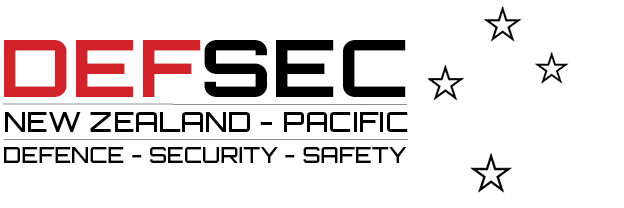
It’s one of the big questions of our time: just how powerful is China? Although 40 years of economic reform and growth may have set the country on a course towards achieving superpower status, the answer, writes Nicholas Dynon, is complicated.
China’s rise to great power status is a subject that has gripped governments, foreign policy wonks and defence analysts. The rising power’s unprecedentedly rapid economic growth, its increasing international assertiveness, and the apparent challenge its state-led success poses to liberal democracies make it a compelling case study in the measurement of ‘national power’.
It doesn’t take an economist to comprehend how much of an economic superpower China has become, but where exactly does the Middle Kingdom sit as a military power?
And what about its ‘soft power’? Does the one-party state’s level of international influence affect its overall power standing? Does Beijing’s domestic grip and ability to ‘get things done’ internally make it more powerful internationally or less so?
Measuring the power of countries
Indexes of national power are used to measure the power of nation-states, and to understand historical trends, such as the nature of power transitions (the rise and fall of great powers), the international system and the nature and constituents of power itself.
Some indexes, such as Gross Domestic Product (GDP), are simple enough and focused on just one aspect of a nation’s power. Others, such as the ‘Audit of Geopolitical Capability’ combine economic, military and other power attributes and are derived from complex formulas. While there is much scholarly and policy interest in how composite power indexes are put together, these attempts at measuring the relative power of states are the subject of much criticism.
Critics highlight, for example, that aggregated power measurements are unable to account for the limited ‘fungibility’ of power. Military power, for example, may give a country little leverage in relation to particular economic issues, nor may it afford the diplomatic clout needed for coalition building.
Another major criticism is that these measures fail to provide insight into the ability of nation-states to convert their power capabilities into effective actions. Writing for RAND, Treverton and Jones comment that states “need to convert material resources, or economic prowess, into more usable instruments, such as combat proficiency,” and even then, outcomes are dependent “on power for what, and against whom”.
“Hard factors have traditionally been viewed as the fundamental basis of a nation-state’s power, but the role of military hard power has arguably receded over time, and the importance of soft factors within an increasingly globalised and information-rich world is becoming more widely acknowledged.”
‘Hard’ dimensions of national power
1. Economic Power
Whichever economic power index one uses, China ranks either in top place or second behind the US, and it’s arrived there quickly.
According to the International Monetary Fund (IMF) October 2019 World Economic Outlook, China is ranked 2nd behind the US in terms of nominal Gross Domestic Product (GDP). Applying Purchasing Power Parity (PPP), which takes into account cost of living and inflation differences between countries, China is ranked 1st.
It’s a similar story in terms of Gross National Income (GNI), which is a measure defined by the OECD as “gross domestic product, plus net receipts from abroad of wages and salaries and of property income, plus net taxes and subsidies receivable from abroad”. China was ranked 2nd in nominal GNI in 2015 and 1st in the PPP version.
Although not strictly a measure of overall economic power, standard of living indexes such as GDP per capita and the Social Progress Imperative’s Social Progress Index (SPI) provide insight into the capacity of a society to meet the basic material needs of its citizens. China is currently ranked 65th in GDP (nominal) per capita, 67th on the SPI, and 68th in GNI (PPP) per capita.
2. Military Power
China is ranked a formidable 3rd behind the US and Russia in the Global Firepower 2020 Military Strength Rankings (MSR), which measures a nation’s potential war-making capability across land, sea, and air fought by conventional means. The MSR utilises fifty factors across multiple categories relating to personnel, equipment, natural resources, finances, logistical capability and geography.
China is also ranked 3rd behind the US and Russia in the Military Watch Magazine Force Index of Countries (FIC), which rates countries by their warfighting capabilities. While the FIC takes both conventional and nuclear capabilities into account it treats the latter as a limited asset due to the extreme caution with which potential deployment would be considered.
Another indicator of military power – or how much a state is investing in it – is military spending. According to the International Institute for Strategic Studies’ 2020 Military Balance assessment of global military capabilities, China ranked 2nd behind the US in military spending – US$bn 181.1 compared to the US’ US$bn 684.6.
3. Geopolitical Power
While the singular measurement of economic or military power is made relatively straightforward by an abundance of objective, quantifiable data and a degree of methodological unanimity, the same can’t be said of ‘geopolitical power’.
Geopolitics is often used as a loose synonym for international politics but more specifically refers to the analysis of geographic, economic and demographic influences on politics and international relations. It’s about the big influences and power shifts that shape the international order.
Enjoying this article? Subscribe to updates by clicking the ‘sign-up’ button on the left, or by emailing ‘subscribe’ to editor@defsec.net.nz
The various indexes that attempt to measure geopolitical power thus tend to focus on the hard power attributes of geography, economics and demography, such as territory, population, military personnel, natural resources and industrial production. They also account for attributes relating to political structures and diplomacy, albeit in a limited way.
Unsurprisingly, China ranks highly in geopolitical power indexes, scoring big points for its massive territory, population and standing army:
Composite Index of National Capability (CINC): China is ranked 1st in the 2012 CINC, which is a ranking of national power developed in 1963 by the University of Michigan’s Correlates of War project. It uses an average of scores in six evenly weighted components: military expenditure, military personnel, iron and steel production, energy consumption, urban population, and total population.
Global Presence Index (GPI): China is ranked 2nd behind the US in the 2016 GPI, a ranking of 80 countries’ ‘external projection’ developed by the Spanish Elcano Royal Institute of Strategic and International Studies. The index aggregates scores across economic presence (38.50%), military presence (15.52%) and soft presence (45.98%). ‘Economic presence’ accounts for 62.6% of China’s score, with ‘soft presence’ accounting for 25.3%, of which 19.7% came from the relatively ‘hard’ attributes of science and technology.
Audit of Geopolitical Capability (AGC): China is ranked 3rd in the 2019 iteration of this index produced by the UK-based Henry Jackson Society. The AGC employs a framework in which economic attributes have a weighting of 27%, military 15%, technology 10%, diplomatic leverage 15% and cultural prestige 15%.
Comprehensive National Power (CNP): China is ranked 3rd in the 2015 CNP. Developed by the Chinese Academy of Social Sciences, CNP weighs national power in eight areas: natural resources (10%), domestic and foreign economics (35%), science and technology (20%), military affairs (10%), government (8%) and foreign affairs capability (7%), and social development (10%).
Formal Bilateral Influence Capacity Index (FBIC): China is ranked 4th behind the US, Germany and France in the 2016 FBIC. A collaboration between the Atlantic Council, University of Denver and Hague Centre for Strategic Studies, the FBIC Index measures bilateral influence across 42 economic, political, and security indicators, including total trade, percentage of total trade, total arms transfers, military alliances, arms imports, percentage of military spending, level of representation and intergovernmental membership.
National Power Index (NPI): China is ranked 4th in the 2012 NPI, which purports to measure a country’s relative percentage share of global power. Developed by academics from the University of Iowa and from South Korea and China, it is a composite of five sub-indexes: Economy (35%), military (35%), diplomacy (10%), technology (10%), and popularity (10%).
According to many scholars, the importance these indexes attribute to hard factors subordinates soft power factors and results in a skewing of power scores towards countries that have large populations, large resource bases and large economies. China’s rise has been widely measured on this basis, and thus the world’s second largest economy is also acknowledged as one of the world’s most powerful nation-states.
Hard factors have traditionally been viewed as the fundamental basis of a nation-state’s power, but the role of military hard power has arguably receded over time, and the importance of soft factors within an increasingly globalised and information-rich world is becoming more widely acknowledged.
‘Soft’ dimensions of national power
Since the 1990s, various disciplines have sought to understand, measure and manage what makes a country internationally influential or attractive to other countries and their publics. Alongside the study of ‘soft power’, popularised by the work of Joseph Nye Jr, the burgeoning fields of ‘nation branding’ and ‘country reputation management’ have introduced new methods and metrics for the assessment of a state’s international image.
These approaches are often erroneously conflated due to a degree of overlap, but they are distinct, having their respective origins in separate disciplines. The neoliberal concept of soft power is a product of international relations, while nation branding has its apotheosis in brand management (a sub-discipline of marketing) and country reputation in reputation management (a sub-discipline of public relations).
1. Nation Branding
Initially, nation branding efforts focused on attracting international tourism, but they have since branched out. National governments now hire marketing firms to develop sophisticated branding campaigns aimed at attracting foreign investment, facilitating trade, improving competitiveness and gaining geopolitical influence.
As a marketing concept, nation branding aims at maximising a country’s ‘relevance’ among global consumers, and several ranking systems have been developed by rival brand management consultancies to comparatively assess the power of nation brands:
Brand Valuation Index (BVI): China ranked 2nd in London-based Brand Finance’s 2019 BVI, which is a ranking of the strength and value of 100 nation brands. It uses a method adapted from the global brand valuation standard ISO 10668 and based on the royalty-relief mechanism employed to value large companies, resulting in a dollar brand value.
Country Brand Ranking (CBR): China ranked 3rd in the 2019/20 CBR trade edition (there is also a tourism edition). Madrid-based Bloom Consulting first released the CBR in 2011 as a means of evaluating the impact of 193 country brand strategies in primarily economic terms: economic performance, digital demand (search data), investment promotion agency performance, and online performance (website analytics, social media presence).
Best Countries Ranking (BCR): China is ranked 15th in the 2020 BCR, an index of 80 countries developed by Y&R’s BAV Consulting, US News & World Report and the Wharton School at the University of Pennsylvania. It’s a big step down for China from the top-four positions it enjoys in the BSI and CBR, and there’s one key reason for it.
The BCR, unlike the preceding indexes, is survey-based, aggregating perceptions about a country rather than hard data. A survey of more than 21,000 international participants, it asks how closely respondents associate a nation with a set of 65 attributes, and each country is then scored on each of the attributes based on the responses.
Other survey-based nation branding indexes appear to follow suit, with China’s rankings falling in the 20-30 range:
Nation Brands Index (NBI): China ranked 23rd in the 2013 Anholt–Gfk Roper NBI. Originally developed by Simon Anholt who is often referred to as the father of nation branding, the index ranks 50 countries via surveys of approximately 20,000 adults in 20 countries. It examines six equally weighted dimensions of national competence: exports, governance, culture, people, tourism, immigration and investment.
FutureBrand Country Index (FCI): China ranked 29th in the 2019 FCI, having ranked 66th in 2012 and 28thin 2014. Developed by FutureBrand, part of the IPG marketing group, FCI is an annual ranking of 75 countries in relation to their attractiveness as destinations for tourism, investment, education and trade. Its methodology involves interviews of a global sample of 2,500 respondents and analysis of social media conversations across ten countries.
2. Soft Power
Soft power differs to nation brand in that it substitutes the investor and consumer focus of nation branding with a broader set of considerations. As envisaged by Joseph Nye, it refers to the power wielded by a state through harnessing the resources of “its culture (in places where it is attractive to others), its political values (when it lives up to them at home and abroad), and its foreign policies (when they are seen as legitimate and having moral authority)”.
Consistent with its performance in other hard and soft indexes of national power, China’s soft power rankings have improved since such measurements began, but its soft power performance lags far behind its hard power, particularly among its maritime East Asian neighbours and the West:
Monocle Soft Power Survey (MSS): China ranked 20th in the 2016/17 MSS developed jointly by the UK-based Institute for Government and Monocle Magazine. The index compares the relative strength of countries’ soft power infrastructure, political institutions, cultural appeal, diplomatic network, the global reputation of their higher education system and the attractiveness of their economic model. Quantitative data accounts for 70% of the total weighting of the index, with subjective elements comprising 30%.
Portland Soft Power 30 (SP30): China ranked 27th in the 2018 SP30. Conducted by London-based PR company Portland Communications and the University of Southern California Centre on Public Diplomacy, the index scores countries against six objective data sub-indices (digital, culture, enterprise, engagement, education and government) and subjective data involving polling of 10,500 respondents from 25 countries.
3. Reputation Management
Reputation management is largely the domain of public relations consultancies, which extend the methodologies of corporate reputation management to the reputations of countries. According to the Reputation Institute, “Attracting FDI, tourists, high skilled workforce and being able to sell the products of the country abroad are facilitated by having a strong country reputation”.
What distinguishes country reputation from nation brand and soft power is that while nation brand is concerned with who you would prefer to buy from, and soft power with who you would prefer to be friends with, country reputation is about who you would trust. It is also the one aspect of a nation’s power where size does not matter. It’s here that – despite improvements – China struggles:
Country RepTrak (CRT): China ranked 45th in the Reputation Institute’s 2018 Country RepTrak (with a RepTrak pulse of 44.08, placing it at the ‘poor’ end of the scale). CRT measures the reputation of 55 countries based on levels of “trust, esteem, admiration and respect” via an online survey of 48,000 respondents in G8 countries.
Good Country Index (GCI): China ranked 61st in the 2018 GCI. Developed by Simon Anholt (of aforementioned nation branding fame), the GCI purports to measure what each country “contributes to the common good of humanity, and what it takes away, relative to its size”. The Index is a composite statistic of 35 data points which are mostly generated by the United Nations and other international agencies and a handful of NGOs.
China’s rankings in the CRT and GCI represent a big step down from its nation brand and soft power rankings, and from here, arguably, it continues downhill.
China ranks 80th, for example, in Transparency International’s 2019 Corruption Perceptions Index (CPI) and 177th in Reporters without Borders’ 2019 Press Freedom Index (PFI). Although these are not aggregated measures of reputation, they nevertheless provide some clues as to China’s relatively poor reputation rankings.
Conclusions
Reflecting on our collective sample of national power indexes, we find that – with some exceptions – China’s rankings are generally higher in indexes that emphasise:
- coercive over non-coercive power factors
- economic, territorial and population size
- objective as opposed to opinion-based data sources
- ‘things’ as opposed to ‘ideas’
- brand value as opposed to political and cultural values
No doubt China’s sheer size, economic progress and historical longevity give it a ‘wow’ factor among foreign publics, but its political values are not so highly regarded. International markets are therefore inclined to invest in and buy from China, but international publics are (with notable exceptions in certain geographies) less inclined to trust China, and they are thus wary of China’s diplomatic overtures and growing international assertiveness.
Ultimately, China’s high economic, military and geostrategic power rankings are undermined by its rankings among the soft dimensions of national power. This matters in an international system where the lines between war and peace are increasingly blurred, where consensus and coalition building matter, and where the cost of war far outweighs the cost of persuasion.





